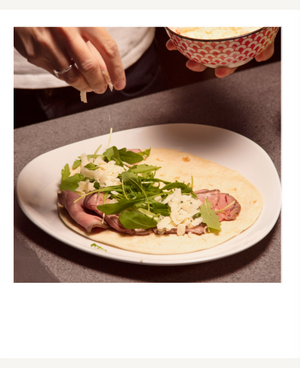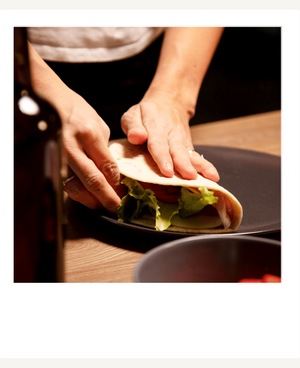
The History of Piadina
Piadina Romagnola, often referred to simply as "piada," has roots that date back to ancient times. Historical records suggest that the Etruscans, who inhabited central Italy, consumed a similar form of unleavened bread. Over the centuries, piadina became a staple food for peasants in the Emilia-Romagna region, particularly because it was inexpensive to make and didn’t require yeast, which was sometimes hard to come by.
Traditionally, piadina was cooked on terracotta dishes, called "testo," over a wood fire. Today, it's typically made on a griddle or cast-iron pan. While simple in its ingredients—flour, water, salt, and lard or olive oil—piadina has become much more than a basic bread. It's a symbol of Italian regional cuisine and an example of how humble ingredients can create something extraordinary.
Ready in just 3 steps

HEAT IT 1 MIN EACH SIDE ON A PAN

ADD YOUR FILLINGS

FOLD IT & ENJOY WITH FRIENDS

Piadina in Modern Cuisine
In recent years, piadina has grown beyond Italy and gained international popularity, particularly in gourmet markets and restaurants in the United States. In Italy, it’s a street food staple often sold at kiosks ("piadinerie"), where you can grab a freshly made piadina filled with a variety of ingredients. It has become a favorite for those looking for a quick, satisfying meal on the go.
For Americans, piadina offers a unique and delicious alternative to tortillas or pita bread. It can be used as a wrap, served alongside soups, or even made into pizzas by topping it with sauce and cheese before a quick bake in the oven. Its simplicity makes it accessible, and its history adds a touch of Italian authenticity to your table.

Bringing Piadina to the American Table
For Americans, piadina represents an opportunity to explore a new culinary tradition. Its simple ingredients and quick preparation make it an ideal introduction to Italian cooking. It’s perfect for busy weeknight dinners, backyard barbecues, or even as a fresh and exciting option for lunchboxes.
By embracing piadina, you’re not just trying a new food—you’re experiencing a part of Italian history and culture that has been lovingly preserved through the generations. Whether you fill it with classic Italian ingredients or put your own twist on it, piadina is sure to become a favorite in your home.



